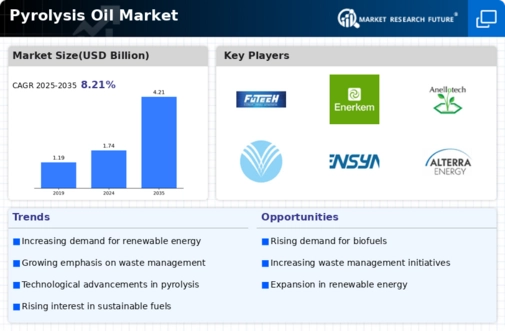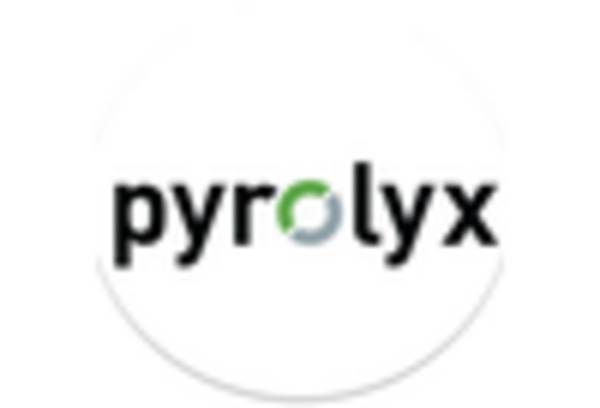Waste Management Solutions
The growing challenges associated with waste management are propelling the Pyrolysis Oil Market forward. As urbanization accelerates, the volume of waste generated continues to rise, necessitating innovative solutions for waste disposal. Pyrolysis offers a method to convert waste materials, such as plastics and biomass, into valuable pyrolysis oil. This process not only reduces landfill waste but also generates a renewable energy source. Recent statistics indicate that The Pyrolysis Oil is expected to reach USD 530 billion by 2027, highlighting the potential for pyrolysis oil as a sustainable waste-to-energy solution. The Pyrolysis Oil Market stands to gain traction as municipalities and industries increasingly adopt pyrolysis technology to address waste management challenges.
Government Incentives and Policies
Government incentives and supportive policies play a crucial role in shaping the Pyrolysis Oil Market. Many governments are implementing regulations and financial incentives to promote the use of renewable energy and waste-to-energy technologies. These initiatives often include tax credits, grants, and subsidies aimed at encouraging investment in pyrolysis technology. For instance, certain regions have established feed-in tariffs for renewable energy sources, which can enhance the economic viability of pyrolysis oil production. As a result, the Pyrolysis Oil Market is likely to experience growth driven by favorable regulatory frameworks that facilitate the adoption of pyrolysis technology and its products.
Rising Demand for Renewable Energy
The increasing The Pyrolysis Oil Industry. As nations strive to reduce their carbon footprints and transition away from fossil fuels, pyrolysis oil emerges as a viable alternative. This bio-oil, derived from organic materials, can be utilized in various applications, including transportation fuels and energy generation. According to recent data, the demand for renewable energy is projected to grow at a compound annual growth rate of over 8% in the coming years. This trend indicates a robust market potential for pyrolysis oil, as it aligns with the global shift towards sustainable energy solutions. The Pyrolysis Oil Market is likely to benefit from this increasing demand, as more industries seek to incorporate renewable energy sources into their operations.
Growing Interest in Circular Economy
The rising interest in circular economy principles is driving the Pyrolysis Oil Market. As businesses and consumers become more aware of sustainability, there is a shift towards practices that minimize waste and maximize resource efficiency. Pyrolysis oil, produced from waste materials, aligns perfectly with these principles by converting discarded products into valuable energy resources. This trend is reflected in the increasing number of companies adopting circular economy strategies, which often include the use of pyrolysis technology. The Pyrolysis Oil Market is likely to see growth as more organizations recognize the benefits of integrating pyrolysis oil into their sustainability initiatives, thereby contributing to a more circular economy.
Technological Innovations in Pyrolysis
Technological advancements in pyrolysis processes are significantly influencing the Pyrolysis Oil Market. Innovations such as improved reactor designs, enhanced feedstock processing techniques, and better product yield optimization are making pyrolysis more efficient and economically viable. Recent developments in continuous pyrolysis systems have shown promise in increasing production rates and reducing operational costs. As technology continues to evolve, the quality and yield of pyrolysis oil are expected to improve, making it a more attractive option for energy producers. The Pyrolysis Oil Market is poised to benefit from these technological innovations, which may lead to increased adoption and investment in pyrolysis facilities.

















Leave a Comment